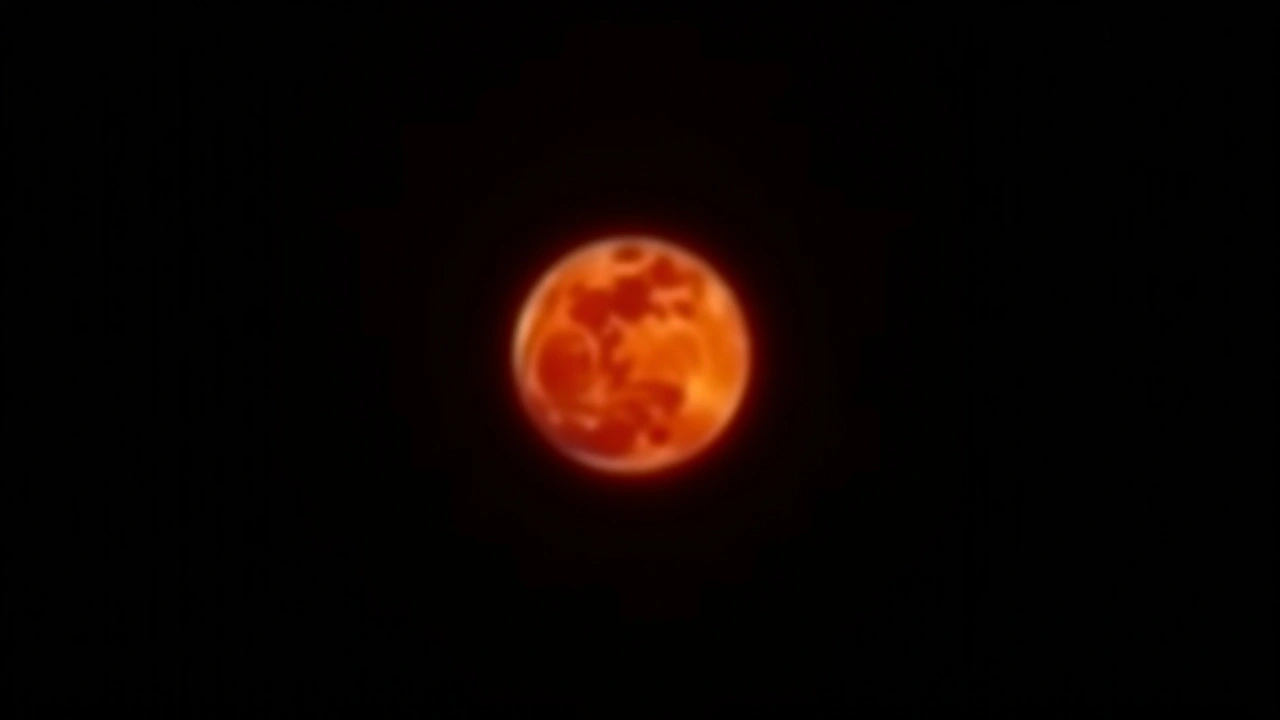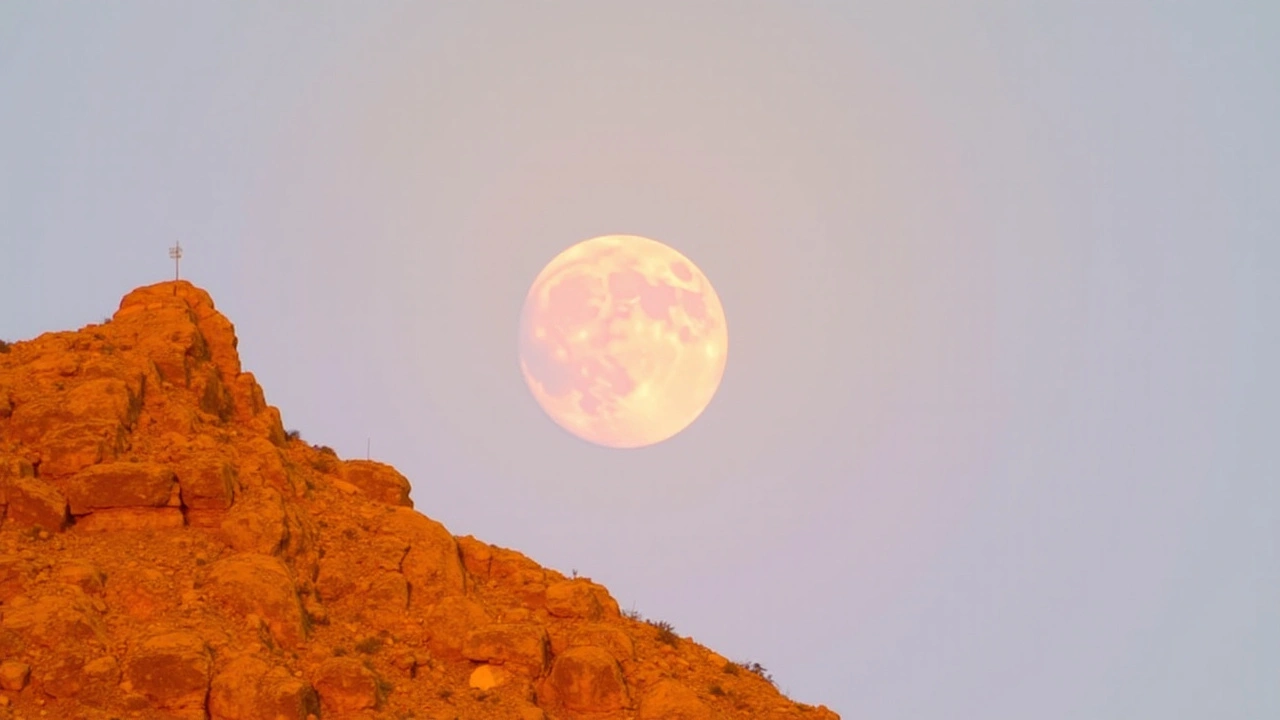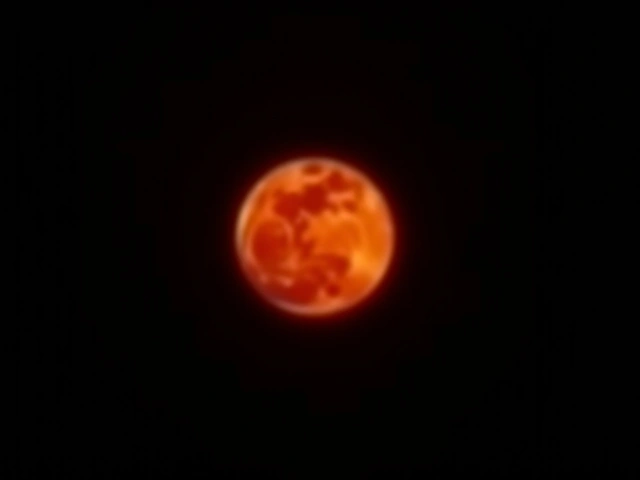
On August 19, 2024, sky gazers and festival-goers will be treated to a rare celestial spectacle: a Super Blue Moon. This event, already captivating for its uniqueness, will coincide with the celebrated Hindu festival of Raksha Bandhan, making it a memorable occasion for many. A Super Blue Moon combines three distinct lunar phenomena—a full moon, a blue moon, and a supermoon, creating a breathtaking sight in the night sky.
The full moon this August will not be an ordinary one. It will appear larger and brighter than usual due to its proximity to Earth. This proximity, known as perigee, marks the Moon's closest point in its elliptical orbit around our planet. A supermoon can appear up to 14% larger and 30% brighter than a typical full moon, making it a dazzling event for both seasoned astronomers and casual sky watchers alike.
Contrary to what its name might suggest, a blue moon has nothing to do with the Moon's color. The term 'Blue Moon' historically refers to the rare occasion when there are four full moons in a single season, and the third one is called a Blue Moon. This usage of the term dates back to the Maine Farmers' Almanac and has become a part of folklore and popular culture over the years.
Such an extraordinary event is rare, occurring approximately every 10 to 20 years. The Super Blue Moon slated for August 2024 is especially significant as it marks the beginning of a series: it will be the first of four consecutive supermoons that will grace the skies that year. This phenomenon further enhances the sense of wonder and anticipation surrounding this lunar event.
Raksha Bandhan, the Hindu festival that celebrates the bond between brothers and sisters, will add an extra layer of significance to the Super Blue Moon. Traditionally, on this day, sisters tie a protective thread, known as 'rakhi,' around their brothers' wrists, a symbol of love and duty. The occasion, which involves gift-giving and family gatherings, will be particularly poignant under the enchanting glow of the Super Blue Moon. Many families are expected to celebrate the festival outdoors, taking advantage of the luminous night.
The Scientific Marvel of the Super Blue Moon
To fully appreciate the Super Blue Moon, one must delve into the astronomical specifics that make this event unique. When we speak of a 'supermoon,' we are referring to the perigee-syzygy of the Earth-Moon-Sun system. Simply put, this occurs when a full moon coincides with its closest approach to Earth. This alignment not only accentuates the Moon's size and brightness but also has slight gravitational effects on Earth, often causing higher than usual tides.
On the other hand, a Blue Moon, as mentioned earlier, is the third of four full moons in a single season. This phenomenon disrupts the regular cycle of three full moons we see during each quarter of the year. When this extra full moon slips in, it provides an extra viewing opportunity for lunar enthusiasts and occasionally leads to confusion about its definition. This rare alignment of a Blue Moon and a supermoon has a certain poetic charm, a reminder of the intricate, almost lyrical dance of celestial bodies.
What to Expect During the Super Blue Moon
From August 19 to August 22, 2024, viewers across the globe will have the chance to witness this spectacular event. Although the Moon's closest approach will peak on the night of August 19, it will appear impressively large and bright for several nights. This extended viewing period allows for ample opportunities to observe and photograph this marvel. Those keen on capturing the beauty of the Super Blue Moon should prioritize clear sky dates and locations with minimal light pollution to maximize visibility.
This astronomical wonder is not just a visual treat. Many cultures around the world attach significant meanings to lunar events. In Hinduism, the full moon is often associated with various festivals and rituals. The convergence of Raksha Bandhan with a Super Blue Moon this year adds an extra layer of spirituality and cultural importance, providing a meditative backdrop for contemplation and celebration.

Future Super Blue Moons
The rarity of a Super Blue Moon means that it offers a unique opportunity for current generations to engage with a celestial phenomena that is infrequent, yet immensely beautiful. The next occurrences of a Super Blue Moon are projected for January and March in the year 2037. These future dates provide a context for the 2024 event, underscoring its rarity and the anticipation it has stirred among those interested in lunar events.
Mark your calendars, gather with loved ones for Raksha Bandhan, and do not miss the chance to witness one of nature’s most awe-inspiring displays. As we look up at the Super Blue Moon, it is an opportunity to contemplate our place in the universe and to cherish the rare moments that bring us closer to the cosmos.






Celebrating a lunar event with a rakhi is a superficial blend of spectacle and tradition.
Wake up, patriots!!! The so‑called “Super Blue Moon” is nothing but a government‑engineered distraction-an astronomical PR stunt designed to divert attention from the impending global agenda, and the State’s hidden surveillance satellites are undoubtedly syncing their data collection cycles with this so‑called “celestial marvel.”
The night sky has always served as a mirror for humanity's deepest questions.
The convergence of a rare Super Blue Moon with Raksha Bandhan invites us to contemplate the interplay between cosmic order and cultural ritual.
In astronomical terms, the perigee‑syzygy magnifies the Moon’s apparent size, reminding us that celestial mechanics operate on scales far beyond human design.
Yet the symbolism we attach to that brightness is profoundly anthropocentric, projecting our narratives onto a silent sphere.
The myth of the “Blue Moon”-originating from agrarian almanacs-illustrates how societies have historically repurposed astronomical irregularities to mark time.
Likewise, the ritual of rakhi, a thread of protection, embodies the human desire to forge tangible bonds against abstract uncertainties.
By observing the same luminous disc that ancient farmers once used to time sowing, modern families today can find a common point of reference across millennia.
This temporal bridge is a reminder that science and spirituality need not be antagonistic but can coexist in shared wonder.
Moreover, the heightened tides induced by the supermoon subtly affect coastal ecosystems, a reminder that even the heavens exert tangible influence on Earth’s biology.
Such physical effects, however modest, underscore the interconnectedness of cosmic and terrestrial realms.
When families gather outdoors beneath this amplified glow, they participate in a living tableau where personal devotion meets universal rhythm.
The aesthetic experience of a larger, brighter Moon can inspire artistic expression, from poetry to photography, enriching cultural output.
In a world often fractured by conflict, these moments of collective observation serve as quiet acts of unity.
They encourage us to look upward together, acknowledging a shared sky that respects no borders.
Ultimately, the Super Blue Moon on Raksha Bandhan invites each of us to reflect on how we bind ourselves to one another under the vast, indifferent cosmos.
It is indeed a remarkable alignment of astronomical rarity and cultural significance. The Super Blue Moon offers an extraordinary visual experience, while Raksha Bandhan underscores the enduring familial bonds that such celestial events can illuminate. Observing this phenomenon together may foster a sense of shared awe and deepen communal ties.
The supermoon’s increased brightness will enhance lunar photography opportunities. Ensure you use a tripod and a low ISO setting for optimal results.
From a methodological standpoint, the synchrony of perigee‑syzygy events with culturally embedded festivals represents a statistically improbable convergence that merits rigorous interdisciplinary scrutiny. The photometric augmentation of lunar albedo during a supermoon can be quantified using apparent magnitude differentials, thereby providing empirical data for both amateur and professional observatories. Simultaneously, the sociocultural construct of Raksha Bandhan offers a fertile ground for ethnographic analysis, particularly concerning the semiotic significance of the rakhi as a protective talisman. The confluence of these phenomena may be interpreted as a symbolic reinforcement of protective kinship under an amplified celestial guardian. While some lay observers might simply appreciate the aesthetic grandeur, a more critical audience can extrapolate themes of intergenerational duty, cosmic determinism, and the human penchant for constructing narrative frameworks around natural occurrences. Moreover, the tidal implications, albeit subtle, could be modeled using lunar distance calculations, yielding insights into marginal sea‑level fluctuations. In essence, this event provides a multi‑layered tableau for both quantitative astronomical assessment and qualitative cultural discourse.
Grab a blanket, head to a dark spot, and let the moon’s glow paint the night – it’s pure magic.
The sky will be a velvet canvas splashed with silver, and families will gather like constellations themselves. Under that luminous dome, the simple act of tying a rakhi transforms into a ritual of cosmic solidarity. Children will stare wide‑eyed, dreaming of lunar adventures, while elders reminisce about generations past. The night promises not just beauty, but a shared heartbeat that pulses with both science and sentiment.
The tidal range may experience a modest increase due to the moon’s proximity, which could affect low‑lying coastal areas. It is advisable for communities near the shoreline to monitor local tide charts during the peak night.
Wow, talk about a showstopper! This Super Blue Moon is basically the universe’s way of throwing a glitter‑filled party, and we’ve got front‑row seats. Grab your telescopes, your snacks, and don’t forget the rakhi – it’s going to be unforgettable.
Ah, yes, because what the world truly needed was another excuse to stare at a rock in the sky while pretending it solves all our existential dilemmas. The lunar spectacle, though visually appealing, does little to address the infrastructural challenges many families face during Raksha Bandhan. One might argue that allocating resources toward community development would yield more tangible benefits than arranging a night‑time picnic under a brighter Moon. Nonetheless, if a fleeting moment of wonder can momentarily uplift spirits, perhaps there is a modest merit to such celestial gatherings. Still, let us not conflate poetic sentiment with substantive progress.
Super Blue Moon tonight, everyone!
Don’t forget to turn off the lights inside for a better view. Have a fantastic night of moon‑gazing!